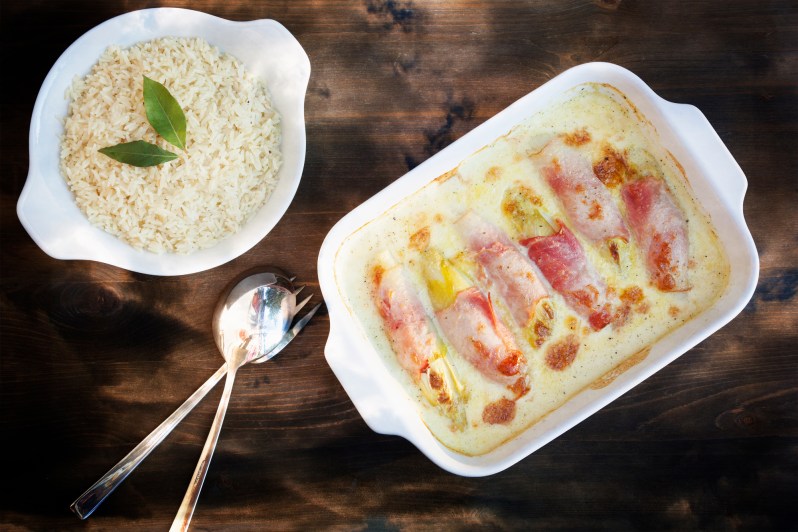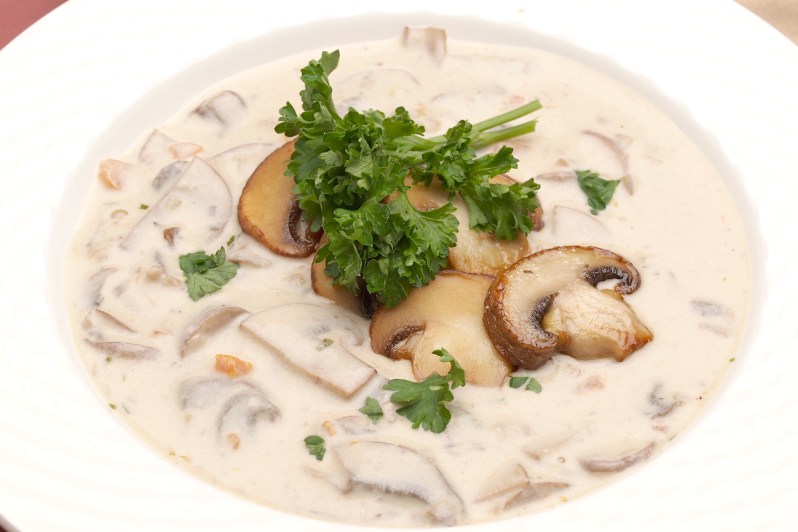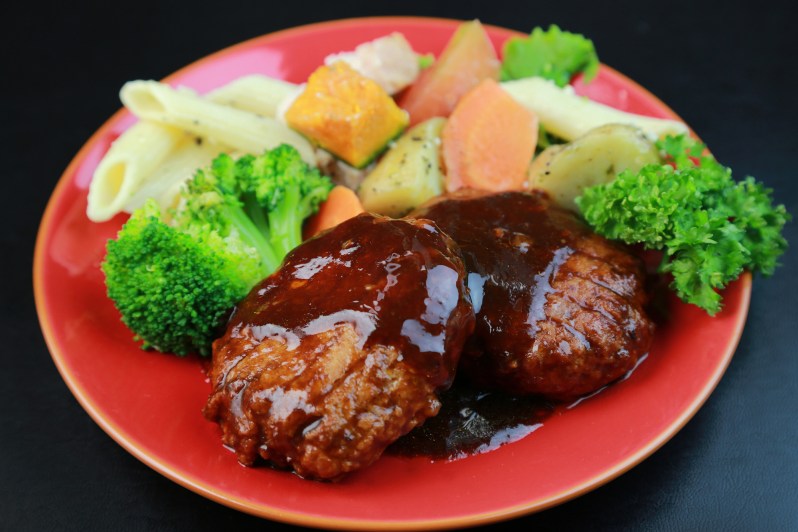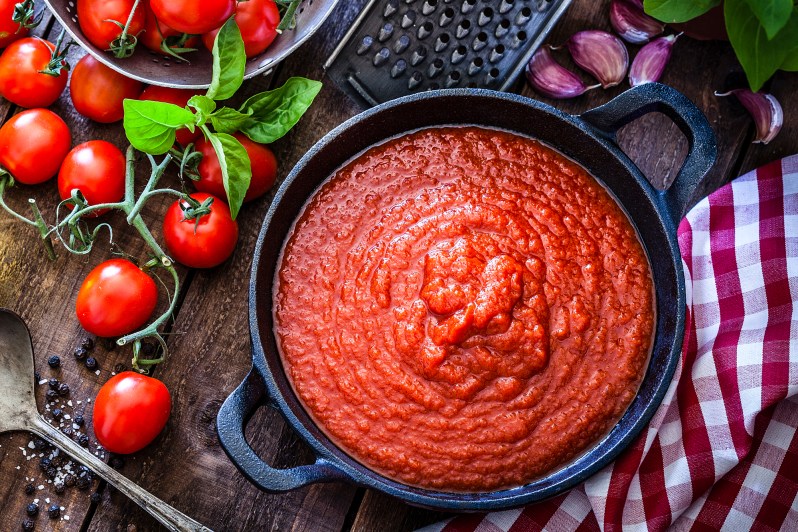There’s a reason why the French culinary tradition represents the foundation of most Western culinary-school curricula. These time-honored recipes and techniques urge chefs — both experts and newbies — to take their time, to get comfortable with paying close attention to details, and to focus on building and layering flavors to delicious effect.
Among the most essential elements of French cooking is a quintet of sauces regularly incorporated into Gallic dishes, referred to in the biz as “mother sauces.”
What is a “mother sauce”?
Essentially, the “mother sauce” term applies to a small group of distinct sauces used as bases for a range of French dishes. The phrase first entered the culinary lexicon in the mid-19th century, when Parisian chef Marie-Antoine Carȇme published an encyclopedic text collection called L’Art de la Cuisine Française. In his writings, Carȇme established four categories of sauces that he deemed integral to French cuisine: béchamel, velouté, espagnole, and allemande. A few decades later, legendary French toque Auguste Escoffier decided to refine and adjust the “mother sauce” categories, and his work resulted in the five-sauce canon that we use today: béchamel, velouté, espagnole, tomate, and hollandaise.
According to chef and recipe developer Suzi Gerber of The Plant Based Gourmet, “mother sauces are like the basic building blocks of flavor for dishes, and they can be used in their simple original forms or embellished to [bring] unique flavor, color and — in some cases — textural components to dishes. Understanding the significance of adding creamy, salty, and savory [elements] and different thickening methods and temperatures is key to nailing these sauces, but they often serve as points of origin for chef creativity.”
The five traditional mother sauces used in French cuisine include:
Béchamel

If you’re familiar with Creole and Cajun cuisine, then you’ve probably heard of a roux. This mixture, famous for its use in dishes like gumbo and étouffée, contains equal parts flour and butter, and it’s the basis for four of the five mother sauces (béchamel, velouté, espagnole, and tomate). “As far as mother sauces go, I am a lover of roux. There is something so rewarding about cooking the flour out perfectly and creating a perfectly velvety sauce,” says chef/proprietor Sara Bradley of Freight House in Louisville, KY.
Arguably the most widely used roux-based mother sauce is béchamel, made by adding milk to a white roux (a quickly cooked version that doesn’t have time to brown and caramelize) and infusing it with aromatics like onion peels, herbs, and peppercorns. The simplicity of béchamel renders it an excellent candidate for customization (Mornay sauce — or béchamel with cheese — is a notable example), and it’s the mother sauce of choice for chef Palak Patel of the Institute of Culinary Education in New York City, who tells us that “my favorite [mother sauce] is béchamel. I spent time cooking in France, and this mother sauce is the first one that I learned to make. To me, it is the backbone of many dishes. Everything from a classic gratin to my Thanksgiving mac and cheese to vegetable lasagna and pasta dishes all have béchamel as a component. While the ingredient list is simple ([just] flour, butter and milk, all of which are readily available), I prefer to elevate the sauce with cheeses and even truffles for the holidays.”
Velouté

Another mother sauce built on a roux foundation, velouté involves a blend of a “blond” (i.e. very lightly browned) roux and a stock made from a light protein like chicken or fish. Like béchamel, velouté is ripe for variations; probably the most famous one used in American cooking comes in the form of turkey gravy. “My favorite French mother sauce is velouté. I really like its versatility to express vegetables and give body to soups, creams, and other sauces. It has a lot of uses and gives a stage to the incorporated ingredients,” claims chef/owner Guy Kairi of Concord Hill in Brooklyn.
Espagnole

Sauce espagnole incorporates roux, veal or beef stock, beef bones, and vegetables, resulting in a “brown sauce” that packs a powerful punch. The finishing touch of this sauce is tomato paste or puree, which lends a welcome brightness to this rich elixir. As far as the most popular espagnole derivative goes, look to demi-glace, a glossy veal stock-based sauce often served with steak and roasted meats.
“Espagnole is definitely my favorite and most-used mother sauce — it’s often forgotten in the conversation because its most common final form is a demi-glace, but even when [it’s] not so fully reduced, it is such a rich and flavorful base to any hearty dish, chef Jenny Dorsey of the Institute of Culinary Education explains.
Tomate

Sauce tomate owes its inclusion in the mother sauce category to Escoffier, who removed allemande sauce from the Carȇme’s original list (according to Escoffier, allemande and velouté were too similar to justify separate mother sauce designations) and replaced it with hollandaise sauce and this roux-fortified concoction made with salt pork, crushed tomatoes, meat stock, and herbs and aromatics. In terms of French cuisine, sauce tomate often flies under the radar, since this basic sauce-making model is so much more closely associated with Italian cooking. And indeed, sauce tomate can be viewed as a precursor to meat-infused Italian (and Italian-American) sauces like amatriciana and “Sunday gravy.”
While the original recipe for sauce tomate included meat and a roux, many chefs now refer to simpler versions of tomato sauce (like the tomato, garlic, and oil base used for marinara) as spins on the tomato mother sauce. Culinary expert and food blogger Chris Riley of The Daring Kitchen shares this opinion, telling us that “tomato sauce is perfect for people just getting into cooking. It requires only a few ingredients and is incredibly easy to use. No wonder tomato sauce is famous — it is simple, but sweet and savory.”
Hollandaise

Finally, we come to the only roux-free mother sauce: hollandaise, best known as the undeniable champion of brunch. This sauce involves an emulsion of butter, egg yolks, and acid (usually either lemon juice and/or white wine vinegar). While Eggs Benedict represents hollandaise’s most legendary application, the sauce also boasts plenty of renowned offshoots, such as béarnaise (made with clarified butter).
Executive chef Ryan Hacker of Brennan’s in New Orleans credits hollandaise’s significance in NOLA cuisine for his fondness for this particular sauce: “Hollandaise is very popular in New Orleans, and [it’s] a favorite of mine. On a normal weekday at Brennan’s, [we\ might go through 3 to 4 gallons — even more on the weekend. It’s a perfect sauce in the springtime — it pairs beautifully with asparagus and crab meat. It’s really versatile and simple — featuring egg yolks, butter, lemon, and vinegar, [hollandaise is] easy to tailor to varied tastes.”



